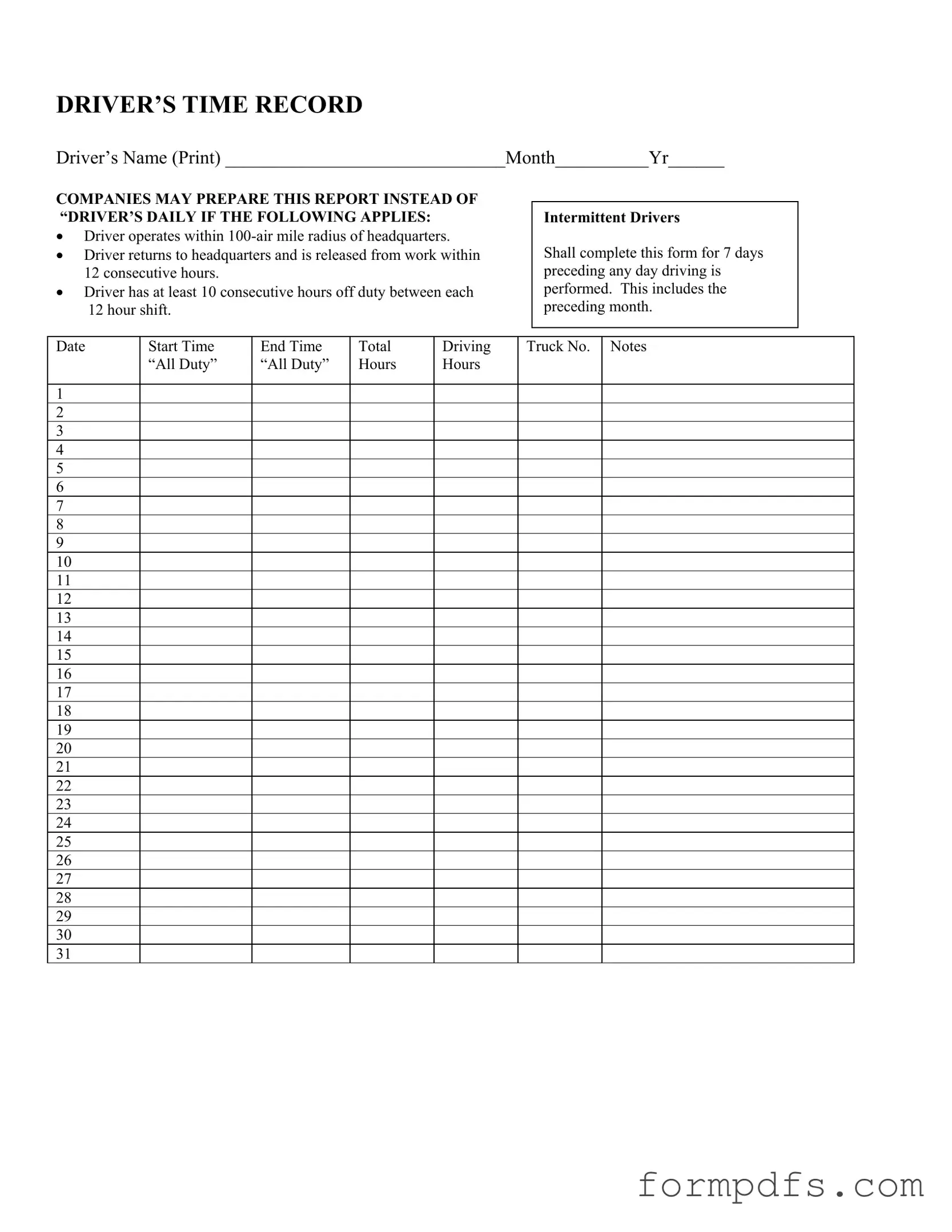What is the Driver Time Record form?
The Driver Time Record form is a document used by drivers to log their driving hours, breaks, and other relevant details. This form is particularly useful for those who operate within a specific radius of their headquarters and meet certain criteria. It helps ensure compliance with regulations regarding driving hours and rest periods.
Who needs to fill out the Driver Time Record form?
This form must be completed by drivers who operate within a 100-air mile radius of their headquarters, return to headquarters within 12 consecutive hours, and have at least 10 consecutive hours off duty between each 12-hour shift. Intermittent drivers should also complete this form for the seven days preceding any day they perform driving duties.
What information is required on the form?
Drivers need to provide their name, the month and year, and details for each driving day, including the date, start time, end time, total driving hours, truck number, and any notes. This information helps maintain accurate records of driving activity and compliance with regulations.
How should I record my driving hours?
When filling out the form, record the start time and end time for each driving session. Calculate the total driving hours by subtracting the start time from the end time. Make sure to log this information accurately to reflect your actual driving time.
What if I don’t drive every day?
If you do not drive every day, you still need to complete the form for the seven days leading up to any driving day. This includes any days in the preceding month. This ensures that your driving records remain up-to-date and compliant with regulations.
What are the benefits of using the Driver Time Record form?
Using this form helps drivers maintain accurate records of their driving hours and rest periods, which is essential for compliance with federal regulations. It also provides a clear overview of work patterns, which can be beneficial for personal tracking and planning.
What happens if I fail to complete the form?
Failing to complete the Driver Time Record form can lead to compliance issues and potential penalties. It is important to keep accurate records to avoid any legal complications and ensure that you are adhering to driving regulations.
Can companies prepare this report instead of the Driver’s Daily Log?
Yes, companies may prepare the Driver Time Record report instead of the Driver’s Daily Log if the driver meets the specified criteria. This provides flexibility for companies while ensuring compliance with regulations.
Where can I obtain the Driver Time Record form?
The Driver Time Record form can typically be obtained from your employer or the relevant regulatory body. It may also be available online through transportation or regulatory websites. Always ensure you are using the most current version of the form.
